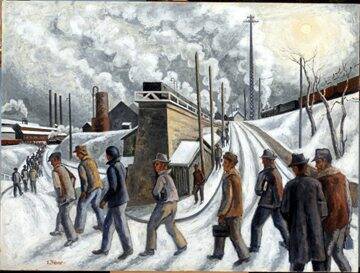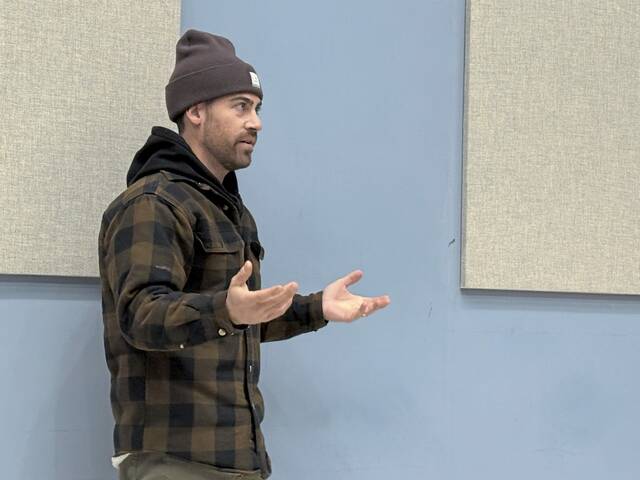It looks cold, the men walking on a snowy street, their hands stuffed in jacket pockets heading into work.
“Night Shift” is more than that though. The 1936 painting by Ernest Fiene that depicts men walking to a steel plant in Aliquippa came at a formative time for U.S. labor law, said Amanda Denham, education programs manager at The Westmoreland Museum of American Art.
“This moment in time is really significant,” she said.
The National Labor Relations Act was passed a year earlier enacting workplace protections for employees and allowing them to unionize and negotiate contracts. The National Labor Relations Board was established in 1935 to safeguard those rights while preventing and remedying unfair labor practices.
The artwork also came at a time when steelworkers were beginning to unionize. The Steel Workers Organizing Committee formed in 1936 and the union signed its first contract the following year, according to United Steelworkers.
In 1938, the Fair Labor Standards Act established the first minimum wage and 40-hour workweek, according to American Federation of Labor and Congress of Industrial Organizations.
The added meaning to the painting shows the power workers were gaining at a time when Pittsburgh was a major player in the steel industry.
“By this time in the 1930s, Pittsburgh was a powerhouse,” Denham said.
Industry is visible in the painting with steam rising into the dark sky from the steel plant and passing trains amid a full moon. Snow blankets the ground under bare trees.
“It clearly would be noisy, but it looks very quiet,” said Erica Nuckles, director of learning, engagement and partnerships at the museum.
The men in the painting look like longtime steelworkers who have been toiling at the plant together for many years.
“They’ve done this walk a million times, you can see that in their body language,” Denham said.








